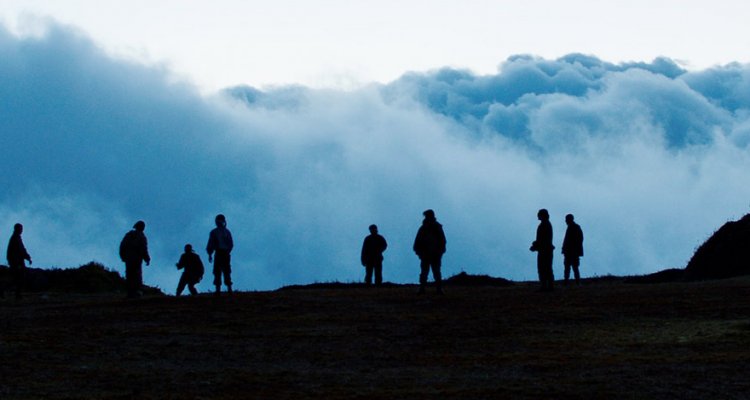For some, it’s a dream, for others a nightmare, but from “Lord of the Flies” to “Survivor,” people never get tired of wondering what life would be as free of the constraints of civilization. It’s an especially potent question for teenagers, who have yet to become fully integrated into society and inevitably harbor the conviction they could run things better given a chance. In “Monos,” Columbian director Alejandro Landes explores these feelings against the backdrop of a guerilla conflict. The name refers to a unit of teen soldiers living high in the mountains, guarding a prisoner of war at the rearguard of an undefined conflict.
READ MORE: Sundance 2019 Film Festival Preview: 25 Must-See Films
Landes never articulates the terms of the conflict whatsoever; his interest isn’t in any specific political agenda, but rather in the guerilla group as a backdrop for the teens creating their own way of life, living almost entirely free of outside influence or technology. Consisting of fighters with names like Rambo, Wolf, and Bigfoot, Monos begins the film at their high point, drilling with discipline and ruled by a group-first ethos that demands, for example, that individuals seek group permission to become romantically involved. Their only connections to the outside world are an older messenger who brings news and orders, and their prisoner (Julianne Nicholson), an American doctor.
READ MORE: The 100 Most Anticipated Films Of 2019
Especially in the film’s first half, Landes’ direction evokes the sensory experience of a life lived at the edge of the world, out of modernity, out of time itself, visually representing this separation in beautiful cliffside shots that let the sky and clouds dominate the frame with only one meager corner occupied by people and earth. Accentuating Landes’ bold visual style is an excellent sound design and score by composer Mica Levi. Immersive and stirring, at its most powerful moments, the score seems to emanate from the natural surroundings, to be a natural extension of the whipping wind of the mountains or the insect choir of the rainforest.
READ MORE: The Most Anticipated Films By Female Filmmakers In 2019
But if the members of Monos begin the film at a relative idyll, it is short lived. The spirit of freedom and celebration leads to two preventable deaths, and the impulsive and less trustworthy Bigfoot is elevated to the leader, diminishing the group’s discipline and comity. Soon, the conflict reaches their location, and they must leave their peaceful aerie for the harsher jungle below. By the time the group switches places, Landes allows glimpses of the real world to reenter the picture, giving the audience the chance to reevaluate the morality of the group outside of the guerilla context. This first occurs with the group’s treatment of their prisoner, or Doctora as they call her. Julianne Nicholson brings a haunting presence to the role, unable to communicate fluently in words, but with watching eyes that reflect the teens’ actions back to themselves. She tries to escape several times, bringing harsh retribution for those who failed to watch her, but she is perhaps even more destabilizing when her maternal instincts emerge, seeing the fighters for how young and insecure they truly are. When the members of Monos finally reenter the everyday world, Landes shows us how monstrously removed they’ve become from morality, their dreams of something better curdled into violence.
READ MORE: The 25 Best Films Of 2019 We’ve Already Seen
Though “Monos” feels very contemporary aesthetically, its subjects are timeless: the malleability of group dynamics and how subtle changes can lead to either violence or harmony. It’s a philosophical film with very few words, examining its ideas through powerful images and feelings. While Landes is clear-eyed about the group’s failures, he’s clearly invigorated by the passion and courage with which they try to find different rules to live by. [A-]
Check out all our coverage from the 2019 Sundance Film Festival here.

